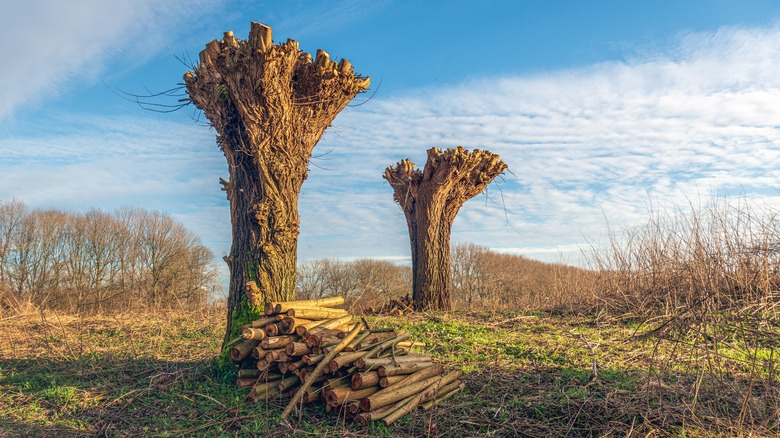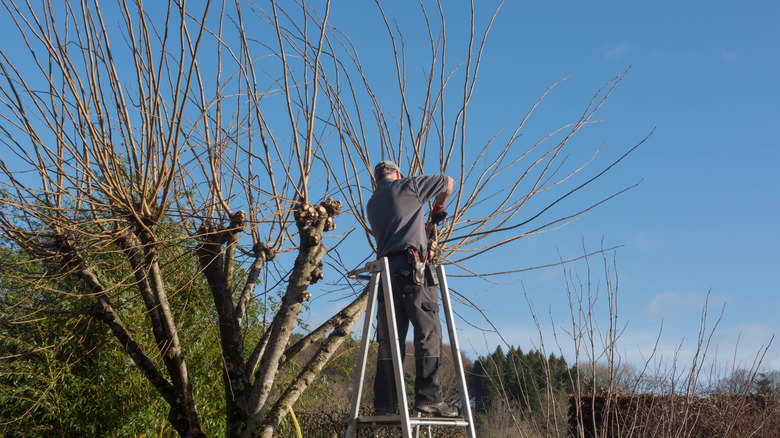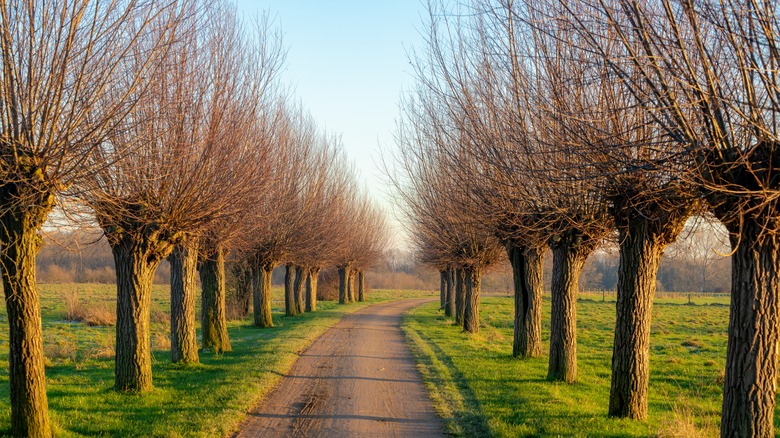What It Means If You See A Tree With Its Branches Cut Back To The Trunk
When you come across a tree with its branches cut back to the trunk, you're likely witnessing an ancient and methodical form of tree management known as pollarding. Pollarding, a practice dating back centuries, is a strategic tree-pruning technique that has several benefits and very specific applications. Understanding what pollarding is all about can provide insight into the health and management of trees in both urban and rural landscaping.
Pollarding involves cutting back branches and twigs to the main trunk or a certain height on the main branches, usually leaving a framework of limbs and a knobby appearance at the cuts. This practice usually begins when the tree is young and is typically done annually or biennially. The tree then produces new, healthy shoots from these cut points, which can be harvested or left to grow. The technique is different from topping, which can be harmful to trees. Topping cuts the tree's branches down to the trunk, whereas pollarding is a more precise and controlled process.
The origins of pollarding can be traced back to Europe, where it was a way to produce firewood, fodder, and building materials without killing the trees. In medieval times, pollarding was common in wood-pasture landscapes, providing a sustainable source of wood. Today, pollarding is often used in urban environments to maintain trees at a manageable size, reduce shade in certain areas, or prevent trees from interfering with power lines.
Benefits and considerations of tree pollarding
Pollarding offers several benefits. It extends the lifespan of trees and encourages consistent growth. It's especially rejuvenating for old trees, stimulating new shoots and maintaining their health. By controlling the size and shape of trees, pollarding reduces the likelihood of environmental damage during storms. It also helps with routine monitoring for disease, decay, and any other problems that may be plaguing your trees.
Pollarding even has ecological benefits, as the regrowth provides habitat and food for various wildlife species. The decayed cavities nurture important fungi life and give birds, bats, and other tree-bound animals a home to nest. The strategic removal of branches also allows for parts of the tree, especially at lower levels, to receive more sunlight. In urban areas, pollarding helps alleviate the heat island effect by inviting more air circulation and carbon dioxide absorption.
While pollarding has its benefits, it's not without challenges. The practice does require ongoing maintenance; once a tree is pollarded, it must continue to be pollarded regularly. Neglecting this can lead to weak growth and potential hazards for your tree. Additionally, keep in mind that public perception of pollarded trees can be mixed, as the aesthetic is quite distinct and sometimes seen as unnatural.
How to pollard a tree
Successful pollarding requires an understanding of tree biology and proper technique. The best time to pollard is usually late winter or early spring when trees are dormant and before the sap begins to flow. However, this can vary based on tree species and local climate. Only certain types of trees are suitable for pollarding, such as ash, lime, elder, gum, elm, mulberry, and oak, among others. Most other trees, such as coniferous and large deciduous trees, are typically not good candidates.
To pollard a tree on your property, you must select the right tree at the right time to make the initial cut. When the tree has reached your desired height, you'll want to cut its upper branches at a consistent height to form the pollard head. Make cuts just above the branch collars (the swollen area where the branch joins the trunk) to promote good healing and avoid tearing the bark.
Each year, or every few years, depending on the tree's growth rate, new shoots will sprout from the pollard head. These shoots should be pruned back close to the pollard head during the dormant season to encourage the growth of a dense head of foliage. Use appropriate safety and cutting gear, and ensure your tools are sharp and clean. For higher branches, a ladder or scaffolding may be necessary. If you're unsure about the pollarding process or the health of your tree, it's wise to consult a professional arborist or tree surgeon.


